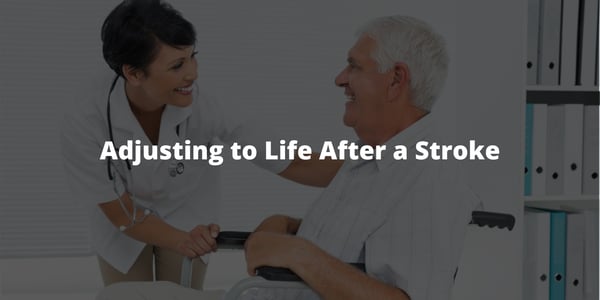In America, stroke is a leading cause of death. The brain and heart rely on each other to sustain...
How to Recognize the Signs of a Stroke
According to a recent statistic published on 4th October 2021, the incidence of stroke increases with age. Almost 67 percent of the stroke patients were 65 or older. Although prevalent in older adults, stroke can occur at any age.
Studies show that every 40 seconds, someone suffers a stroke. The good news is that you can take steps to help reduce the risk of strokes. John Elflein, a research expert covering health and health care, published a report that shows how lifestyle changes can manage these risks.
First, you must know the early signs and symptoms. In this post, you'll find how to recognize the signs of stroke and act in this situation.
Signs and Symptoms of Stroke
The signs and symptoms of stroke include some major and minor indicators. In most cases, when the stroke attack isn't very obvious, minor symptoms appear. Unfortunately, due to a lack of knowledge, people often ignore them, which leads to more severe symptoms.
FAST Symptoms of Stroke
You can easily remember the major early warning signs of stroke with the acronym FAST:
- F= Facial drooping – During this, a side of the patient's face droops or becomes numb. You can confirm this by asking the person to smile. If the smile is uneven, then it's an early sign of a stroke.
- A= Arm weakness – One side or arm of the person becomes numb, weak, or paralyzed. The easiest way to confirm this is to ask the person to lift both arms. If any arm drifts downwards, you can count this as a sign of stroke.
- S= Speech difficulty – The speaking and understanding ability is compromised. A person suffering from a stroke will not be able to say words clearly.
- T= Time to call - When any two or all of these signs appear, the person needs immediate medical assistance.
Other Symptoms of Stroke
Aside from the FAST signs of the stroke, there are some other symptoms too. These symptoms can appear with fast symptoms or later and include:
-1.jpg?width=300&name=radvilas-seputis-R0MVTGafe4U-unsplash%20(1)-1.jpg) Dizziness: Sudden dizziness without any apparent reason can be a stroke sign. This is generally a sign of a cerebellar stroke.
Dizziness: Sudden dizziness without any apparent reason can be a stroke sign. This is generally a sign of a cerebellar stroke.- Confusion: Sudden confusion can be an early sign of a stroke. An MRI scan can clear things.
- Vision problem: Vision problems in one or both eyes can indicate a stroke near the brain's vision center.
- Inability to walk: Loss of balance and coordination results in difficulty walking during a stroke attack.
- Severe headache: Sudden onset of a headache without any known or apparent cause is a sign of stroke.
- Vertigo: Studies say that about 3% of people in the emergency rooms of hospitals due to vertigo are suffering from a stroke. This condition is one of the early signs of stroke.
Other conditions that are often associated with stroke and serve as a warning sign in some cases include:
.jpg?width=300&name=man-g2f39ecd02_640%20(1).jpg) Rapid heartbeat
Rapid heartbeat- Shortness of breath
- Hiccups
- Pain in legs and face
- Chest pain
After-Effects of Stroke in Older Adults
Depending upon the severity of the stroke, the complications that result afterward can be temporary or permanent. The complications are more visible in the elderly, and they need more time to recover, too.
Some common stroke complications in older adults include:
- Paralysis or impaired muscle control
- Memory loss
- Speaking, eating, or swallowing problems
- Uncontrolled emotions
- Behavioral changes
- Pain in body parts affected by stroke
Stroke Risk Factors
Major risk factors that can cause stroke include:
- Hypertension
- High cholesterol
- Heart disease
- Diabetes
- Heavy alcohol use
- Transient ischemic attack (TIA)
- Prior stroke
- Obesity
- High levels of stress
With age, the likelihood of having one or more of the conditions mentioned above increases. Regular consultations with your doctor can help you find ways to control these conditions.
Transient Ischemic Attack (TIA) – A Pre-Stroke Condition That Leads to Stroke
The transient ischemic attack, also known as a pre-stroke or mini-stroke, occurs when there is a temporary decrease in blood supply to the nervous system or brain. The symptoms are similar to those of a stroke, especially in older adults, but they are mild. The symptoms go away after a few minutes, which is why people don't go to the doctor for a detailed check-up.
However, paying attention to transient ischemic attacks is vital to save a life. According to the statistics from CDC, TIA should be considered a warning sign for developing stroke within a year. Therefore, it's crucial to tell your doctor about the symptoms of TIA immediately.
How To Reduce the Risk of a Stroke
Among all the neurological conditions, stroke is known as the most preventable. Expert doctors and researchers say that your risk of suffering an ischemic stroke attack nearly doubles every decade after age 55. Similarly, the chances of having a hemorrhagic stroke also increase after 45. So, as your age increases, you must look at ways to prevent stroke.
Whether you have a history of stroke and TIA or not, here are the three primary measures that can help you prevent stroke.
- Know your stroke risk factors
- Follow your doctor's advice and ensure regular visits
- Choose a healthy lifestyle
Here are some things that you can do to help lessen your chances of experiencing a stroke:
- T
.jpg?width=300&name=pexels-anna-shvets-5067748%20(1).jpg) ake time for physical activity every day
ake time for physical activity every day - Regularly check your blood pressure
- Reduce sodium or alcohol intake
- Quit smoking
- Learn to manage stress
- Make healthy and balanced food choices
- Lower the amount of cholesterol and saturated fat in your diet
- Maintain healthy body weight
- Don't use any drugs or medications without the doctor's recommendation
- Keep diabetes under control
Stroke is a common yet preventable health condition. This condition primarily affects older adults. Therefore, you have to be more careful about the warning signs as your age increases. Now that you know how to recognize the signs of a stroke, make sure you act the right way if you observe any. Make lifestyle changes and talk to your doctor regularly to avoid this condition, which otherwise can be deadly.






